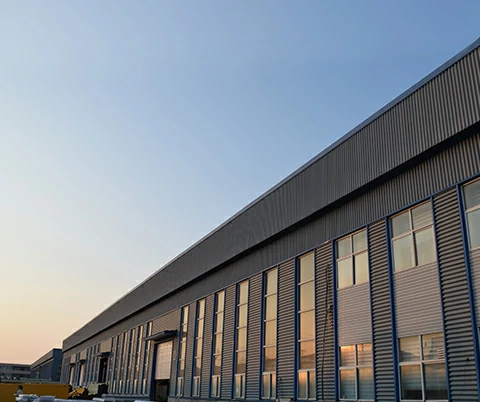loading...
- No. 9, Xingyuan South Street, Dongwaihuan Road, Zaoqiang County, Hengshui, Hebei, China
- admin@zjcomposites.com
- +86 15097380338
- Welcome to visit our website!
Innovative Applications of FRP Grating in Modern Engineering Solutions
The Role of Grating in FRP (Fiberglass Reinforced Plastic) Applications
In the realm of engineering and materials science, Fiberglass Reinforced Plastic (FRP) is increasingly gaining recognition for its unique properties and applications. Among its various forms and uses, FRP grating stands out as a vital component in numerous industries. This article will explore the significance of FRP grating, its benefits, applications, and considerations during selection and installation.
Understanding FRP Grating
FRP grating is a composite material made from a combination of fiberglass and a resin matrix. The fiberglass provides strength and rigidity, while the resin offers resistance to corrosion and degradation. This combination results in a lightweight, durable, and versatile material that can withstand harsh environmental conditions. FRP grating is designed in various styles, including molded and pultruded, with various surface textures to enhance slip resistance.
Benefits of FRP Grating
1. Corrosion Resistance One of the most significant advantages of FRP grating is its outstanding resistance to corrosive substances. Unlike traditional materials like steel, which can rust and degrade when exposed to chemicals, FRP maintains its structural integrity, making it ideal for use in chemical processing plants, wastewater treatment facilities, and marine applications.
2. Lightweight FRP grating is approximately 75% lighter than steel, allowing for easier installation and reduced structural support requirements. This feature not only lowers transportation costs but also minimizes the installation workload, leading to significant time and labor savings.
3. High Strength-to-Weight Ratio The strength of FRP grating makes it effective in bearing heavy loads while remaining lightweight. This property enables its use in applications where load-bearing capabilities are crucial, such as industrial flooring and walkways.
4. Customization FRP grating can be tailored to meet specific project needs, including varying thicknesses, colors, and surface finishes. This level of customization allows for integration into existing designs and enhances aesthetic appeal.
5. Electrical Insulation Unlike metal grating, FRP does not conduct electricity, making it a safe choice for environments where electrical hazards are a concern. This feature is especially valuable in the manufacturing of electronic equipment and in areas where personnel safety is paramount.
Applications of FRP Grating
FRP grating is utilized across a broad spectrum of industries owing to its durability and performance. Some prominent applications include
grating de frp

- Chemical Processing In facilities where corrosive substances are handled, FRP grating provides a reliable and long-lasting solution that mitigates the risk of material degradation.
- Wastewater Treatment FRP grating is commonly used in treatment plants, providing walkways and access platforms that withstand harsh chemicals and wet conditions, ensuring worker safety and operational efficiency.
- Marine and Coastal Structures The inherent resistance to saltwater corrosion makes FRP grating ideal for docks, piers, and other coastal applications, extending the lifespan of installations in these challenging environments.
- Food and Beverage Industry With its non-corrosive properties, FRP grating is suitable for food processing facilities, where hygiene and safety standards are paramount, negating the risk of rust contamination.
Considerations for Selection and Installation
When choosing FRP grating for a specific application, several factors must be considered
- Load Requirements Assess the load-bearing capacity needed for the application. Selecting the appropriate thickness and style of grating is crucial to ensure safety and functionality.
- Environmental Conditions Consider factors like temperature fluctuations, exposure to chemicals, and moisture presence. These elements will influence the choice of resin and the overall design of the grating.
- Installation Procedures Adequate planning for installation is essential, including the tools required, methods of securing the grating, and attention to safety protocols to protect workers during the installation process.
Conclusion
FRP grating is an innovative solution that offers significant advantages for various industrial applications. Its strength, durability, and resistance to corrosive environments make it an ideal material for modern infrastructure needs. As industries continue to evolve and seek sustainable materials that promote safety and efficiency, FRP grating will undoubtedly play a crucial role in shaping the future of engineering and construction. By understanding its benefits and appropriate applications, businesses can leverage the full potential of this versatile material in their operations.
-
Transform Your Spaces with FRP Grating SolutionsNewsNov.04,2024
-
The Versatility and Strength of FRP RodsNewsNov.04,2024
-
The Excellence of Fiberglass Water TanksNewsNov.04,2024
-
The Benefits of FRP Grating for Your ProjectsNewsNov.04,2024
-
Elevate Your Efficiency with FRP Pressure VesselsNewsNov.04,2024
-
Welcome to the World of FRP Pressure VesselsNewsOct.12,2024
-
Unveiling the Future of Filtration: Why FRP Filter Vessels are a Game ChangerNewsOct.12,2024
